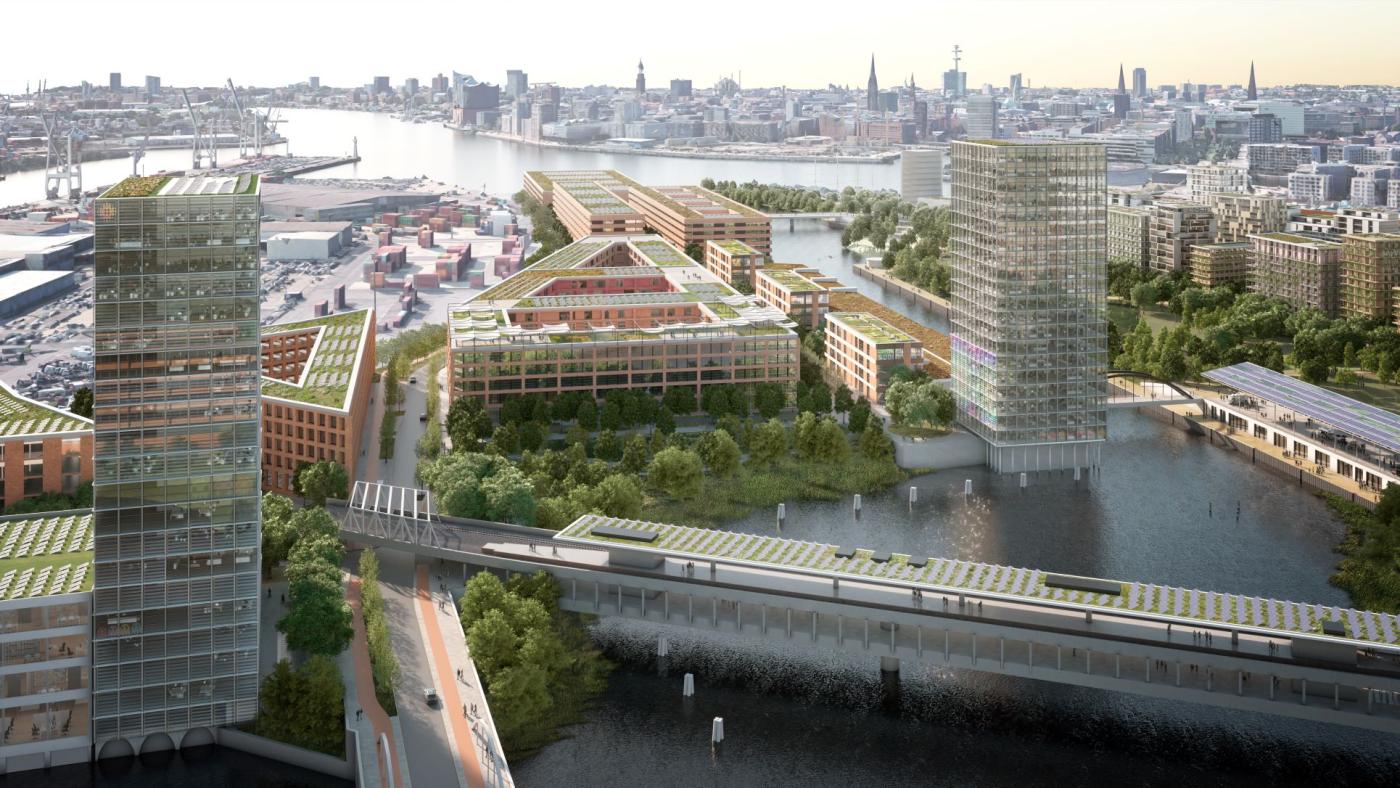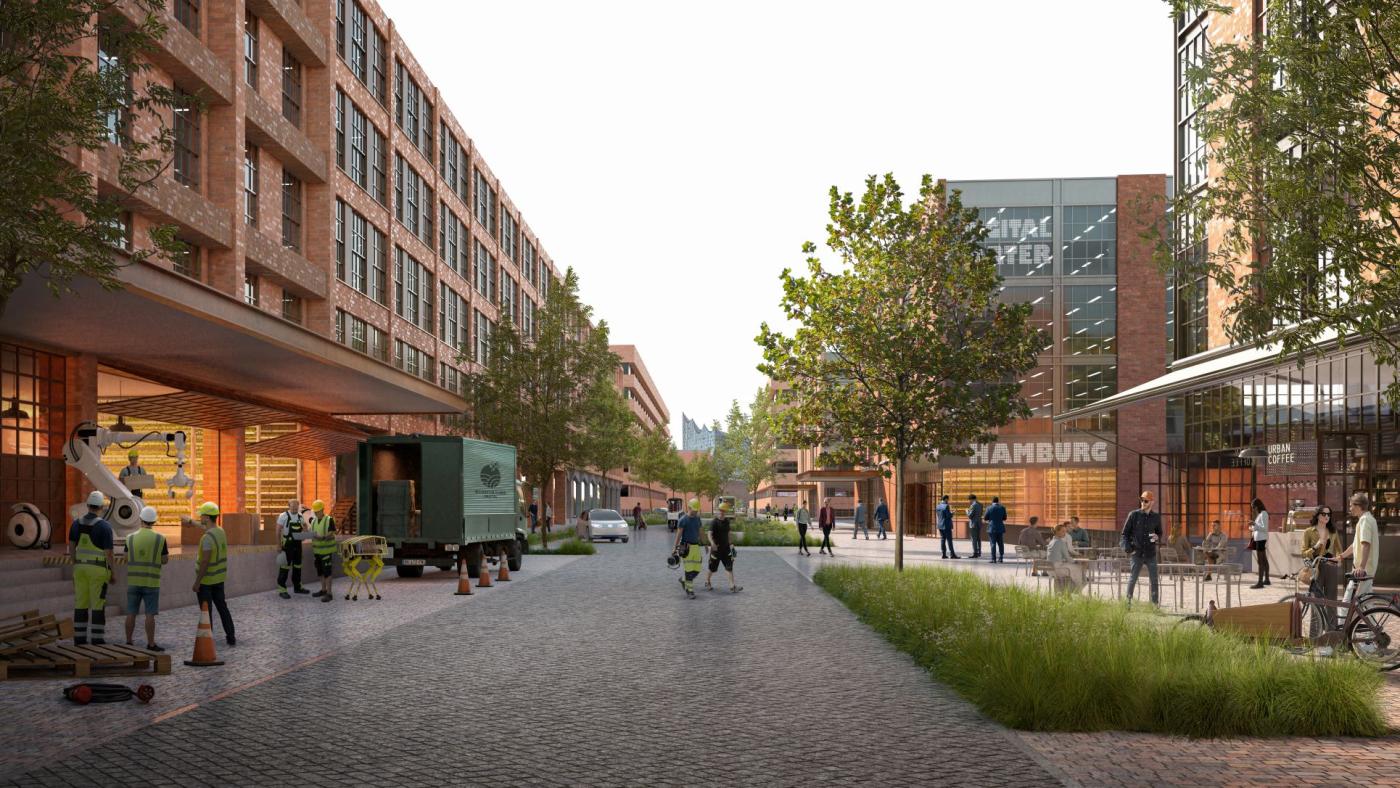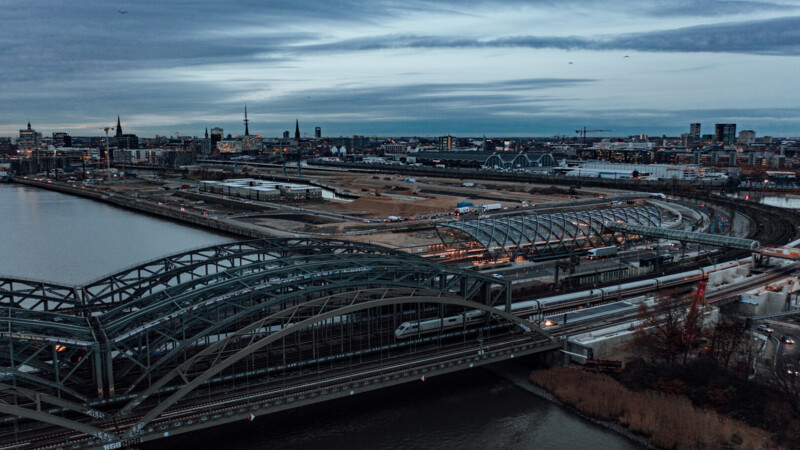The plans began taking shape after the official launch in late 2022. The architects, Herzog & de Meuron and Vogt Landschaftsarchitekten, are tasked with planning the open, urban space and acquiring developers with the first tenders to be issued in autumn. Earlier in spring, a series of competitive meetings were held for a pedestrian and cyclist bridge linking up Veddel with Grasbrook. Listed buildings will be renovated and work on the first new buildings will commence in late 2024. Hamburger Hochbahn has also announced plans to extend the U4 underground to Grasbrook including a bridge and tracks alongside the motorway. The train will cross the Norderelbe River and continue up a viaduct and stop at Moldauhafen. Plans for an extension of the U4 to Wilhelmsburg are also being mulled.
During her last official act as senator, Dr Dorothee Stapelfeldt presented in December plans for the brand new suburb of Grasbrook as historic bridge-building and bringing the total number of suburbs in Hamburg to 106 on completion. Her successor, Karen Pein, the former Managing Director of IBA Hamburg, is now the incumbent Senator for Urban Development and Housing. Earlier, Stapelfeldt stressed: "Grasbrook offers our city a great opportunity to build a piece of the future centrally and to meet the huge challenges of fair and social housing, climate and resource protection as well as new worlds of work." Around 3,000 apartments, educational facilities, sports, leisure and shopping facilities are being built on a 47-hectare site thereby creating 16,000 jobs. Grasbrook is set to become particularly verdant with a large park and other green spaces spread out over the Moldauhafen quartier in the north and the Hafentor quartier while the O'Swaldkai terminal nearby will remain part of the port.
Plans taking shape

Focus on environment and climate protection
Grasbrook is set to feature several short, intelligent mobility routes so that all amenities can be reached within ten minutes on foot or by bicycle via pleasant avenues, squares and green corridors. The idea is to develop a "green city on the water". Dense trees, green roofs and facades should make for a pleasant climate as such roofs keep the heat out and cool the interior, which in turn reduces energy costs. Green roofs also add to biodiversity and habitat for insects and birds. Rooftop plants and on facades filter pollutants and lower CO2 levels. Solar energy and environment-friendly heat should reduce the carbon footprint and recyclable materials will be used in construction.

Test areas for new working environment
Grasbrook should appeal to everyone regardless of income, age or origin. At least 35 per cent of the suburb will include publicly-subsidised rental apartments, a large proportion of which will be for priority housing seekers. And up to 20 per cent of apartments will be reserved for joint building ventures. The new Moldauhafen will be essentially residential with a school, seven nursery schools, sports and playgrounds as well as cultural and leisure facilities. The Hafentor quartier, on the other hand, will be geared towards working. Three listed warehouses will preserve its traditional character while spaces for testing new working environments will lend it a futuristic trait. Franz-Josef Höing, Hamburg's Building Director, has high hopes for the new suburb: "Grasbrook continues the architectural identity of the green metropolis on the waterfront and reveals new means of transforming the port and industrial sites into urban districts."
ys/pb

Sources and further information
More
Similar articles

Construction of Elbtower in HafenCity approved

1,400 apartments for HafenCity and Elbbrücken

